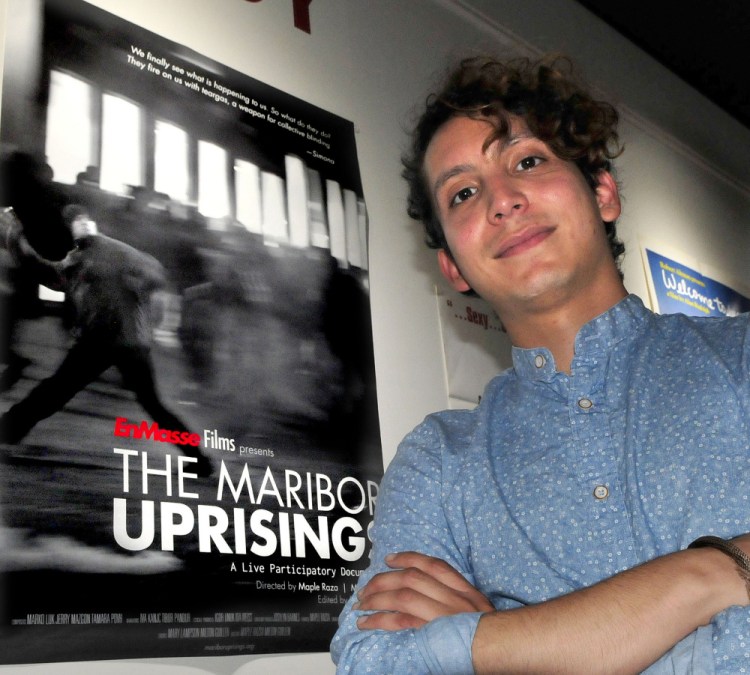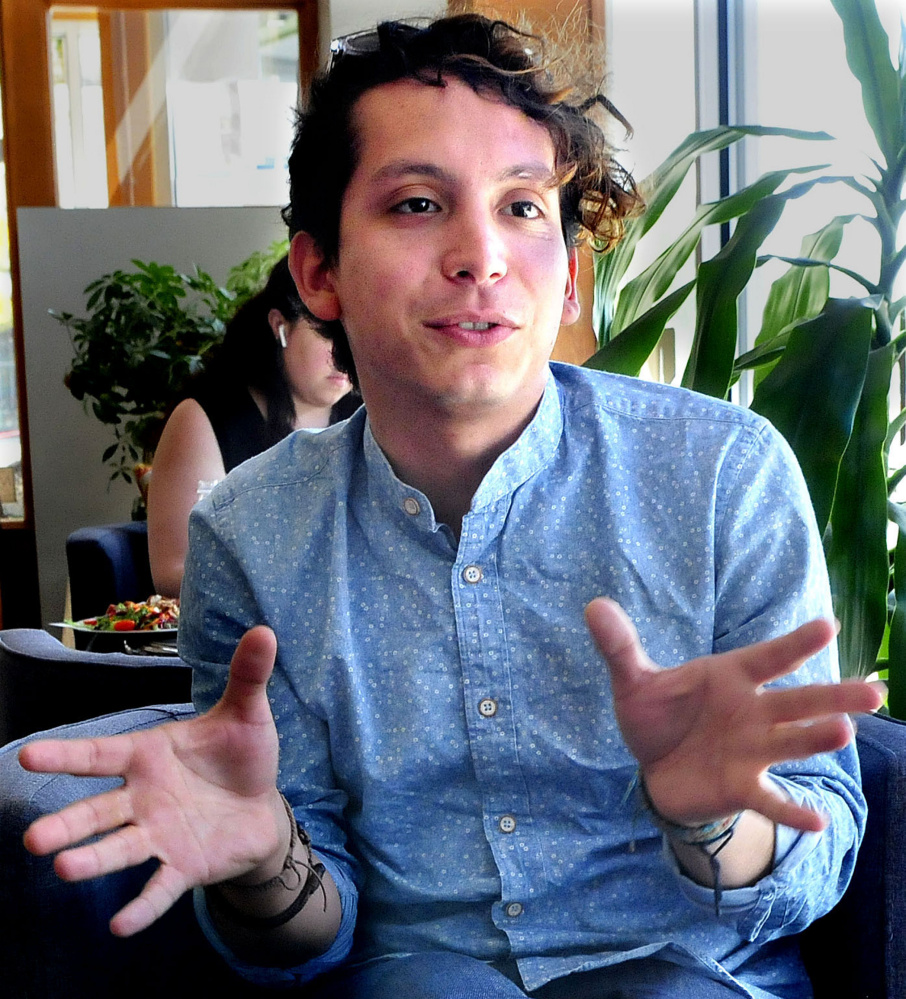WATERVILLE — The first decision point in “The Maribor Uprisings,” an interactive documentary making its Maine debut at this year’s Maine International Film Festival, comes less than 10 minutes into the film.
You’ve just learned why residents of Maribor, a city of about 100,000 people tucked in the mountains of northwestern Slovenia, have decided to take to the streets in a third uprising aimed at the city’s rampant political corruption.
The mayor of Maribor, we learn, has enriched himself and his allies during his time in office. In this latest affront, the mayor implemented a stationary traffic radar system that, in its first weeks, sent 70,000 traffic tickets to Maribor homes. The residents discover that the proceeds of those tickets are being funneled to a private contractor with ties to the mayor. Meanwhile, the mayor has plans to run for the country’s National Council, which, if he were successful, would grant him immunity from prosecution.
“Even in Maribor we can’t believe life after socialism is so corrupt,” an invisible narrator intones.
Shortly afterward, the film thrusts its audience into a first-person point of view of the 2012 Maribor uprising, in which 20,000 people, a fifth of the city’s population, took to the streets to protest corruption and depose their mayor. At the start of the uprising, we see peaceful protesters gathered in a square around a monument to Slovenians killed by the Nazis in World War II. They shout a slogan, “He’s finished,” and sound horns.
Then the film cuts to another part of the square, where a rowdier group rolls a massive wheel of hay toward City Hall. These are violent agitators, we’re told; then the film pauses. Do we want to follow the violent protesters or remain in the square with the peaceful demonstration?
It’s an intriguing setup for a film, a choose-your-own-adventure for the big screen where each choice cuts off further possibilities and each screening has the potential to result in a completely different film.
But there’s more to it. In requiring its audience to make choices, the film and its accompanying facilitator — on Tuesday it was screening director Milton Guillen — force audiences to consider their own views on the nature of protest and the kinds of choices they would make if they found themselves and their own cities engulfed in a similar uprising. Tuesday’s audience, we learn from Guillen, is the first he’s seen to choose to remain peaceful.
“I was really impressed with that audience,” Guillen said in an interview Wednesday. “They really bought the interactivity and understood the stakes.”
Guillen is a former Colby College student and now employee who shares a directing credit for the film with Colby global studies and anthropology professor Maple Razsa. Razsa invited Guillen to work with him on the film after the two met on campus.
Both men share a history of activism and a love for the moving image. During his time at Harvard University, Razsa participated in a multi-day sit-in in the university president’s office to protest for a living wage for school workers. At Colby, Guillen also pushed for wage increases for workers and questioned the college’s use of images in promotional materials that did not accurately reflect diversity on campus.
When they started working on a film about the uprisings, Guillen said Razsa knew he wanted to do something different. All the footage from the protest was shot by activists on the ground or police in a helicopter we see following and spotlighting protesters for future prosecution. Beyond the immediate interactivity, the film also allows audiences to take on the perspective of activists spread throughout the protests, from one shooter filming from behind the safety of a line of police decked out with riot gear and shields to another on the front lines with protestors heaving rocks, bottles and smoke grenades back at the same police officers.
At one point, the film offers an opportunity to see the protests from the perspective of “the hunter,” the police helicopter stationed above the fray. When you choose to switch to the helicopter’s perspective, you also hear commentary from the officers aboard who mock the protesters and comment on how pointless their protest is.
While covering the results of the protest, which we won’t give away here, the film raises questions that feel particularly resonant in an age of mass protest in Maribor, the Arab Spring, the Black Lives Matter movement and the Women’s March.
Does protest really work, and to what end? Is nonviolent protest still possible in an era of highly militarized police forces?
Audiences of the film are guided through meditations on those questions by a moderator following a script provided by the filmmakers. At Tuesday’s screening, audience members reflected on their own experiences with protests and questioned whether it was possible to keep such massive gatherings of people nonviolent once the crowd’s energy level reach its peak.
Brian Milakovsky, 32, who lives in Kiev, Ukraine, described his experiences during massive protests in that city in 2014.
“When you get so much energy and so many people in the street, it’s hard to remember what you’re there for,” Milakovsky said.
Milakovsky said many of his activist friends who were involved in the 2014 protests did not believe they had accomplished real change and, feeling “intensely used,” regretted participating.
Another audience member, who identified himself as a gay man, pointed to the 1969 Stonewall Riots as an example of a case in which he believed violence was a necessary response to continued violence by police officers.
Guillen said the film had sparked similar conversations all over the world across about 50 screenings with reactions varying depending on the makeup and origin of the audience. In Copenhagen, Denmark, for instance, where residents enjoy the benefits of a robust welfare state, there was a qualitatively different reaction than in some regions with more tenuous relationships with their government, Guillen said.
The film is screening a second time at MIFF — at 9:30 p.m. Saturday at Railroad Square Cinema in Waterville. As audience members left the theater Tuesday, many said they wanted to return to see what might happen next time.
Kate McCormick — 861-9218
kmccormick@centralmaine.com
Twitter: @KateRMcCormick
Send questions/comments to the editors.





Comments are no longer available on this story